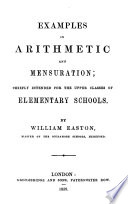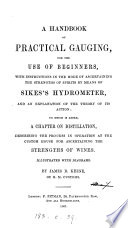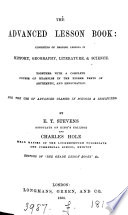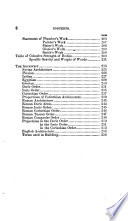 | Charles Haynes Haswell - Measurement - 1858 - 350 pages
...Triangle by the length of its Sides (Figs. 6 and 7). RULE. — From half the sum of the three sides subtract each side separately ; then multiply the half sum and the three remainders continually together, and the square root of the product is the area. Or, Vs (s—a)x(s—b)x(s—c)—area,... | |
 | William Easton (of Hereford.) - 1859 - 110 pages
...are given. Rule 2. Find half the sum of the sides. From this half sum, subtract each side separately. Multiply the half sum and the three remainders together, and extract the square rout. The result is the area. Find the area of the following triangles : — 15. Base, Г-5 ft. ; perpendicular,... | |
 | Janes Boddely Keene - 1861 - 104 pages
...one-9th yds. When the Three Sides of a Triangle are given. RULE. — From half the sum of the three sides subtract each side separately ; then multiply the half sum and the three remainders together, and the square root of the last product will be the area. What is the area of a triangle whose sides are... | |
 | Charles Davies - Navigation - 1866 - 448 pages
...Ans. 29 A. OR 7 P. THIRD METHOD. Measure the three sides of the triangle. Then, add tJiem together and take half their sum. From this half sum subtract each side separately. Then, multiply tiie half sum and the t/iree remainders together, and extract the square root of the product: the result... | |
 | Edward Thomas Stevens - 1866 - 434 pages
...of any triaiu]k when the three sides only are gicen. KULE : — From half the sum of the three sides subtract each side separately, then multiply the half sum and the three remainders together. The square root of the product is the area of the triangle. THE EQUILATERAL TRIANGLE. Definition: —... | |
 | Whiting Griswold - Railroad engineering - 1866 - 144 pages
...the area. To find the area of a triangle by its sides. RULE 8. From half the sum of the three sides subtract each side separately ; then multiply the half sum and the three remainders continually together, and the square root of the product will equal the area. RULE 4. Multiply the... | |
 | A. C. Smeaton - Building - 1867 - 314 pages
...triangle may also be found from the three sides. RULE. Add the three sides together, and from half the sum subtract each side separately ; then multiply...the half sum and the three remainders together, and the square root of the product will be the area required. Let the sides of a triangle be 30, 40, and... | |
 | Gerardus Beekman Docharty - Geometry - 1867 - 474 pages
...the triangle. From which we derive the following RULES. from half the sum of the three sides ml/tract each side separately ; then multiply the half sum and the three remainders together, and the square root of their continued product will b« the area of the triangle. Or, RULE n. Add together... | |
 | Septimus Tebay - Measurement - 1868 - 168 pages
...triangle when the three sides are given. From half the sum of the sides subtract each side separately; multiply the half sum and the three remainders together, and extract the square root. Ex. 1. Find the area of a triangle whose sides are 19, 24, 34. 7So7S 375375 300300 75o75 10885875 45... | |
 | Alfred Hiley - 1871 - 184 pages
...are equal to two right angles, then its area will be found thus : — Add together the four sides, and take half their sum. From this half sum subtract each side separately. Multiply these four remainders together, and the square root of the product is the area of the trapezium.... | |
| |